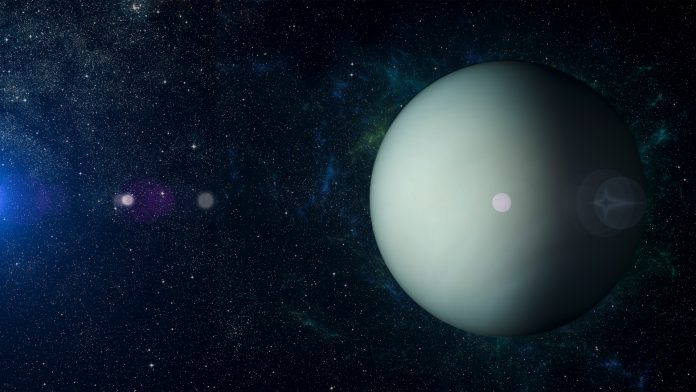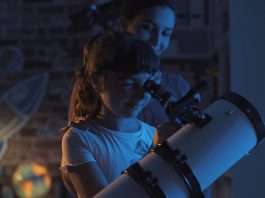The Royal Astronomical Society is holding a dedicated livestream of observations of Uranus, led by researchers at the University of Leicester.
The astronomers and planetary scientists will utilise the NASA Infrared Telescope Facility (IRTF) on Mauna Kea, Hawai’i, to bring live imagery of Uranus to people all around the globe on 8, 9 and 10 October.
The Royal Astronomical Society (RAS) is inviting the public to watch the live footage of Uranus – which is nearly three billion kilometres away from Earth – as the scientists take measurements and examine different aspects of its atmosphere across the three days of observations.
Sir William Herschel, who subsequently became the founding president of the RAS, discovered the ‘ice giant’ in 1781 by utilising a small telescope in his garden.
Successful collaboration
The partnership follows a very lucrative RAS livestream that was held in 2020 and was also led by Leicester scientists. This livestream observed the shadow of the moon Ganymede passing across the face of Jupiter in real-time.
These novel observations of Uranus will occur from 09:00 to 16:55 BST (08:00 to 15:55 UTC) on Friday 8, Saturday 9 and Sunday 10 October 2021, and will be available to watch on the RAS YouTube channel.
Detailed study of Uranus
Emma Thomas, a PhD student at Leicester University, will lead the observations: “Over these three days of observations, we will be building up the most detailed infrared map of Uranus that we have ever completed (a full 360 degrees longitude), and by doing this we hope to detect and fully map the southern infrared aurora for the first time ever.
“My area of research is to investigate and fully map the infrared aurorae at Uranus, which is done by analysing spectra (looking at the different wavelengths of light received from Uranus) from telescopes such as IRTF, Keck (also on Hawai’i), and the Very Large Telescope in Chile.
“The aurora of Uranus has been a long-standing mystery since the first detection of near infrared emissions back in 1993, but in the last four years, we have begun to take the first steps in understanding the weird and wonderful aurorae we see at Uranus.”
Sharing observations with the public
Lucinda Offer, Education, Outreach and Events Officer at the Royal Astronomical Society, added: “We’re really excited to be able to share this livestream event from Hawai’i so the public can learn more about what astronomers do, as the teams in Leicester, Hawai’i and at the RAS follow in Herschel’s footsteps. 240 years on, Uranus is still a mysterious world, and in celebration of Women in Space for World Space Week, Emma and her colleagues will show us how astronomers are slowly unlocking its secrets.”
Dr Tom Stallard, Associate Professor in Planetary Astronomy at the University of Leicester, concluded: “We were blown away by the reaction to our livestream of Jupiter last year and look forward to collaborating with the RAS once again as we focus on Uranus.”
“It’s really exciting to be able to share the thrill of live observations such as this, as the team – led by Emma – look to map the emissions from a previously uncharted corner of our Solar System.”
On top of novel real-time observations of Uranus, each day’s livestream will also showcase expert guests from the Royal Astronomical Society, University of Leicester, and research institutions such as the Japanese Aerospace Exploration Agency (JAXA). There will be opportunities to put questions to the astronomers and planetary scientists, as well as opportunities to learn how our understanding of this distant planet has transformed in the two and a half centuries since Uranus was first discovered.









